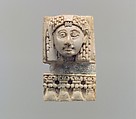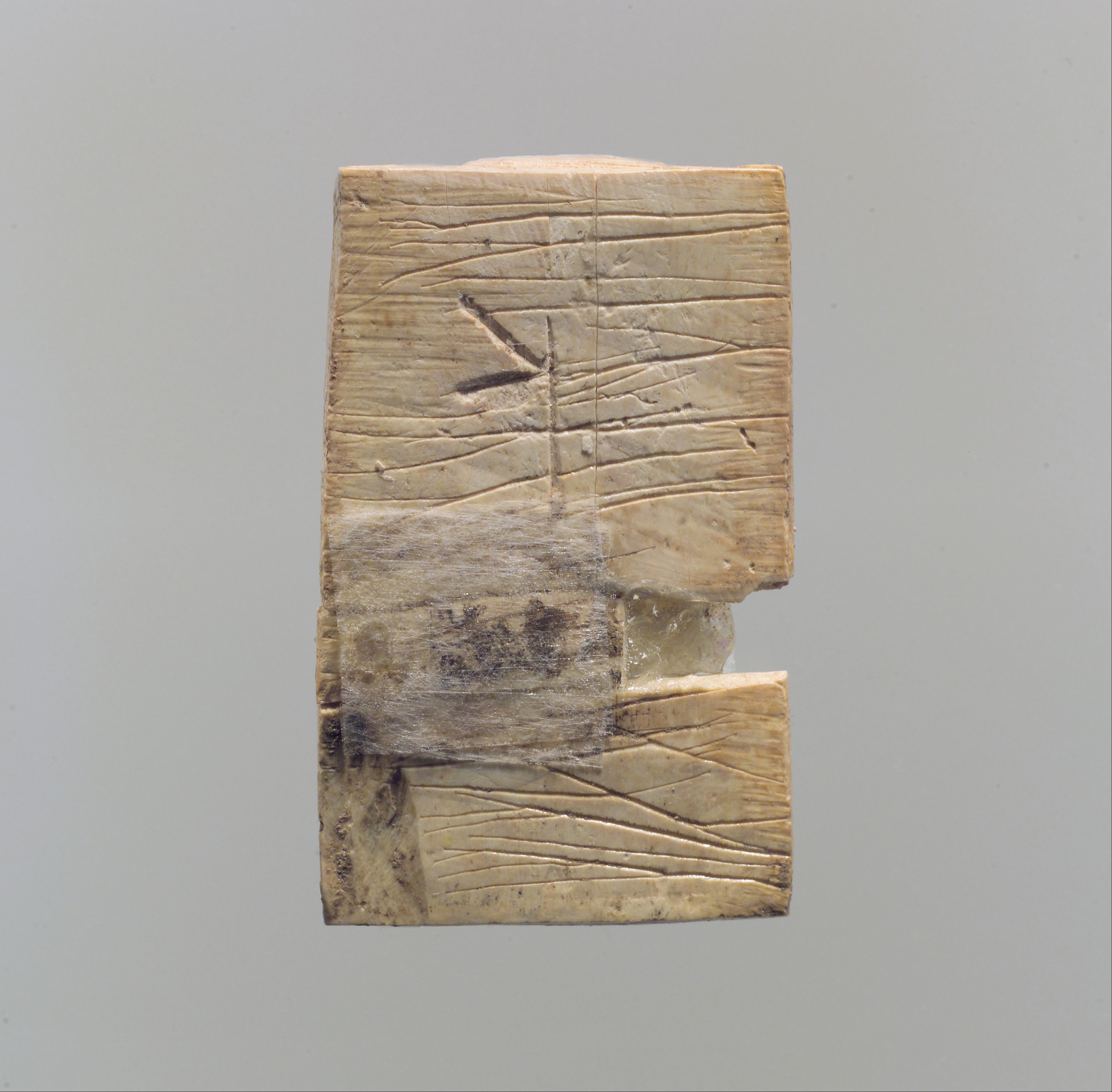Furniture plaque carved in relief with a “woman at the window”
Not on view
During the early first millennium B.C., ivory carving was one of the major luxury arts that flourished throughout the ancient Near East. Elephant tusks were carved into small decorative objects such as cosmetic boxes and plaques used to adorn wooden furniture. Gold foil, paint, and semiprecious stone and glass inlay embellishments enlivened these magnificent works of art. Based on certain stylistic, formal, and technical characteristics also visible in other media, scholars have distinguished several coherent style groups of ivory carving that belong to different regional traditions including Assyrian, Phoenician, North Syrian and South Syrian (the latter also known as Intermediate).
Several ivories in the Metropolitan Museum’s collection are from the Aramaean town of Arslan Tash, ancient Hadatu, in northern Syria just east of the Euphrates River, close to the modern Turkish border. French archaeological excavations at the site in 1928 revealed city walls and gates in addition to a palace and temple that were built when the Neo-Assyrian king Tiglath-Pileser III (744-721 B.C.) turned the town into a provincial capital and military outpost. During the excavations, over one hundred ivory furniture inlays that can be attributed to the South Syrian and Phoenician styles were found in a building near the palace. One piece bears a dedicatory inscription in Aramaic to King Hazael, mentioned in the Bible, who ruled Damascus during the second half of the 9th century (ca. 843-806 B.C.), suggesting that this collection of ivory furniture inlays could have been taken by the Assyrian state as tribute or booty from Damascus. The Arslan Tash ivories share an amalgamation of Egyptianizing motifs typical of the Phoenician style and forms characteristic of North Syrian art that may indicate a South Syrian or Damascene origin of this group. Today, these ivories are housed in museums in Paris, Aleppo, Jerusalem, Karlsruhe, and Hamburg, as well as The Metropolitan Museum of Art.
On this plaque, the face of an opulently adorned female wearing a rectangular diadem with pendants looks out directly toward the viewer. The image can be attributed to the South Syrian style, expressed by a combination of North Syrian and Phoenician forms. Although the Egyptian-style wig is a type often depicted on Phoenician style ivories, the full, round face, and large eyes and nose are characteristic of the North Syrian tradition. Below, a balustrade of four columns topped by volute capitals supports a band of glass inlay. The West Semitic letter Gimel is inscribed into the roughened reverse of the plaque, probably as a guide for the assembly of the piece of furniture to which it originally belonged. Some scholars associate the “woman at the window” with the Levantine goddess Astarte.
Due to rights restrictions, this image cannot be enlarged, viewed at full screen, or downloaded.
This artwork is meant to be viewed from right to left. Scroll left to view more.



